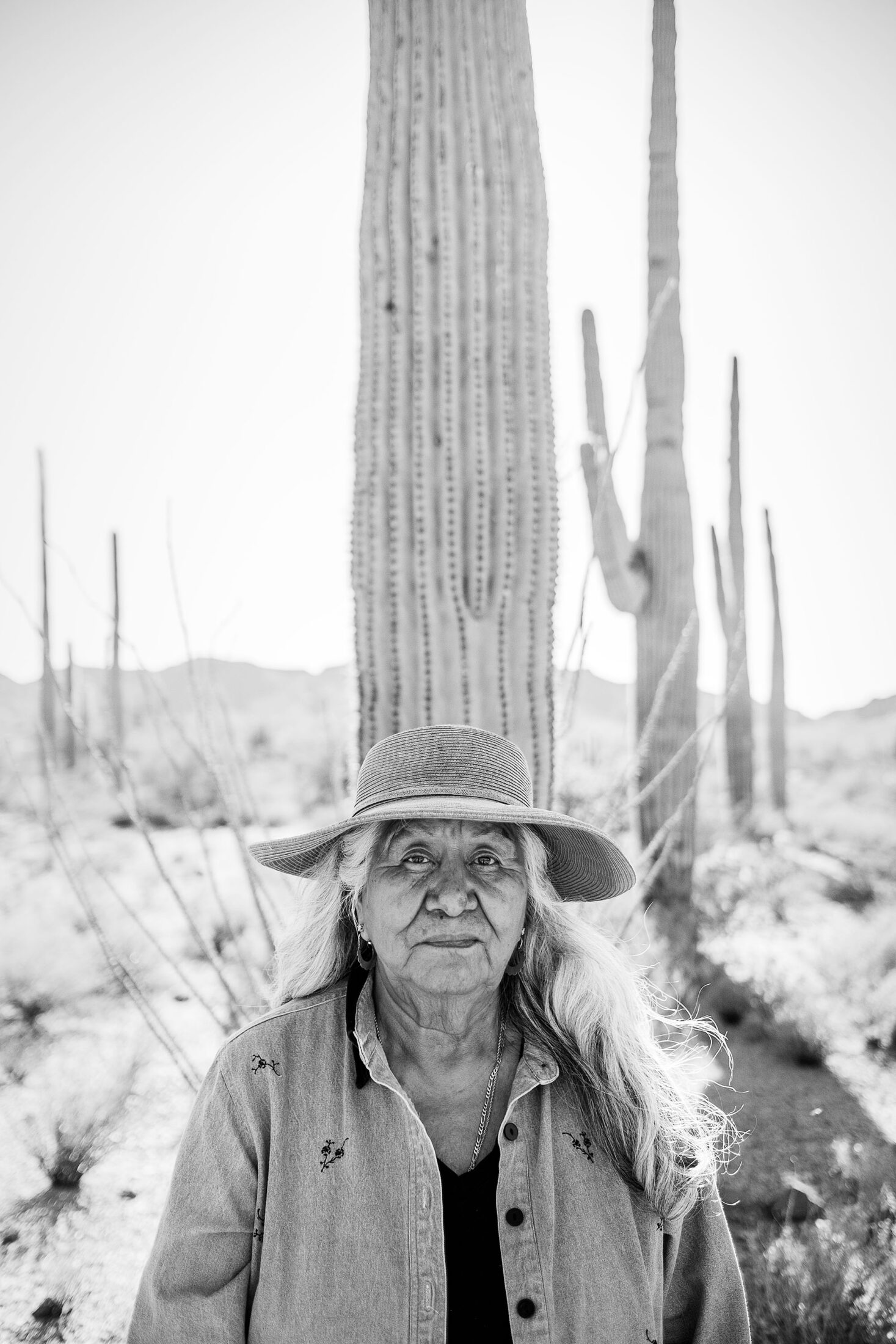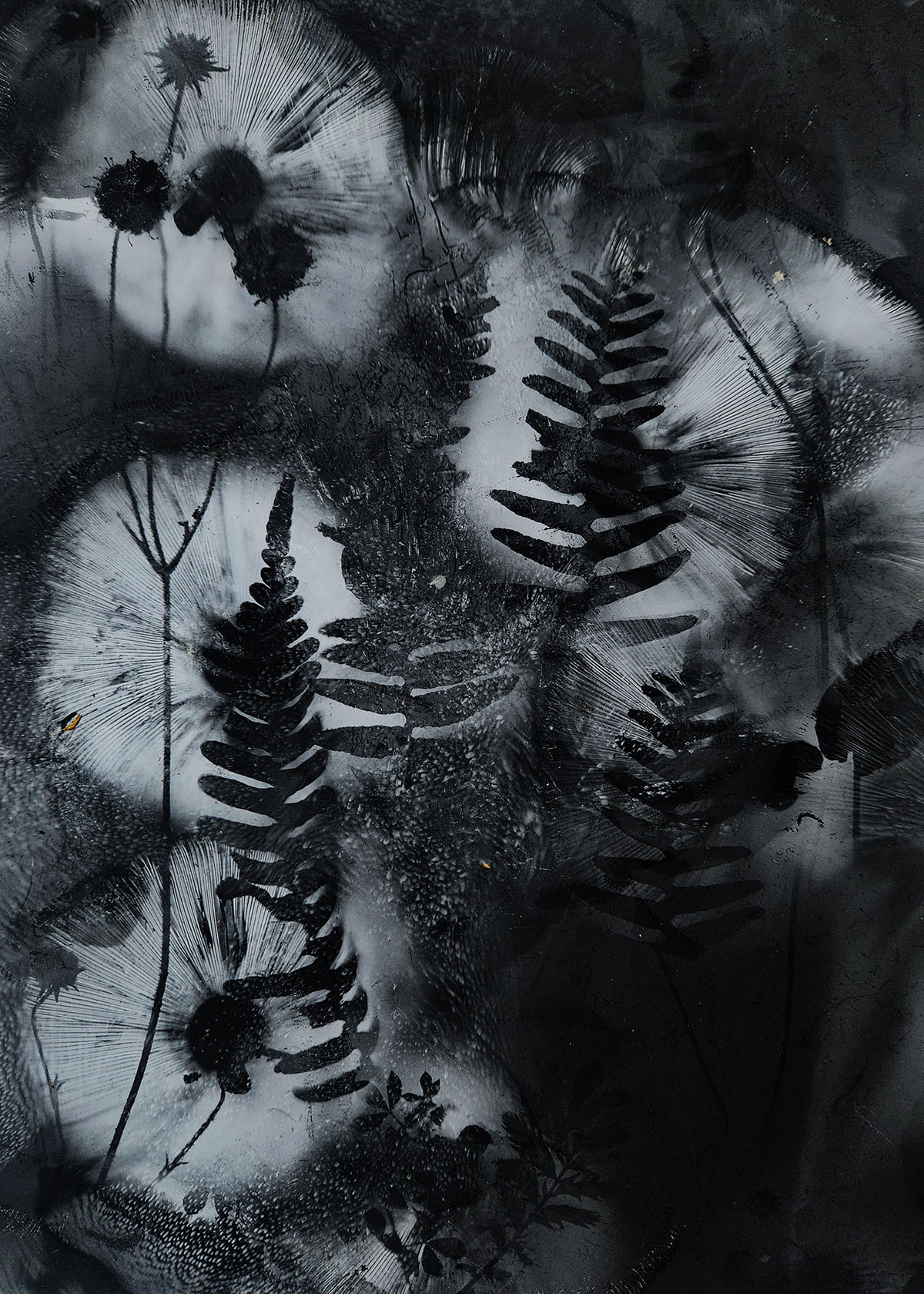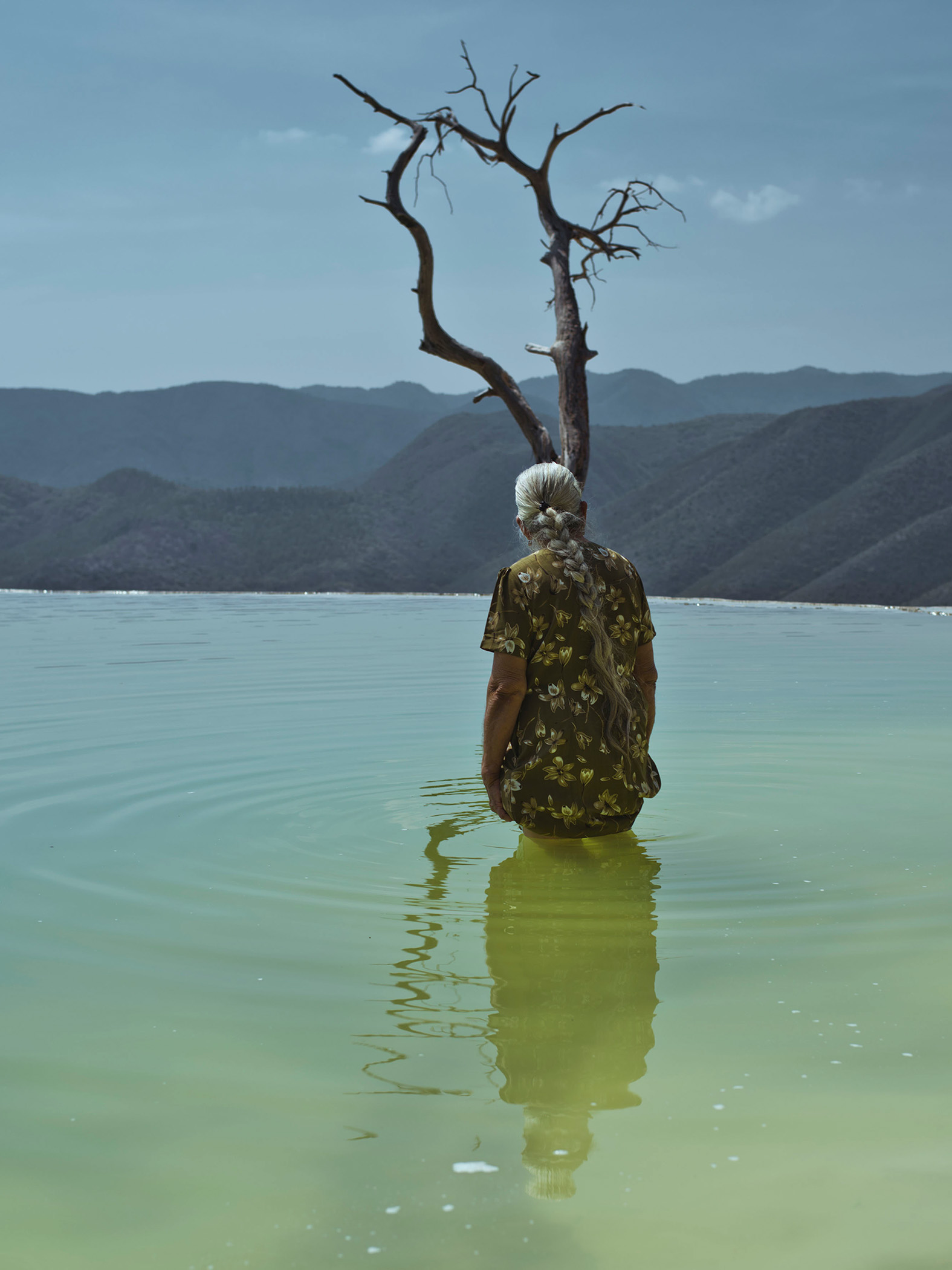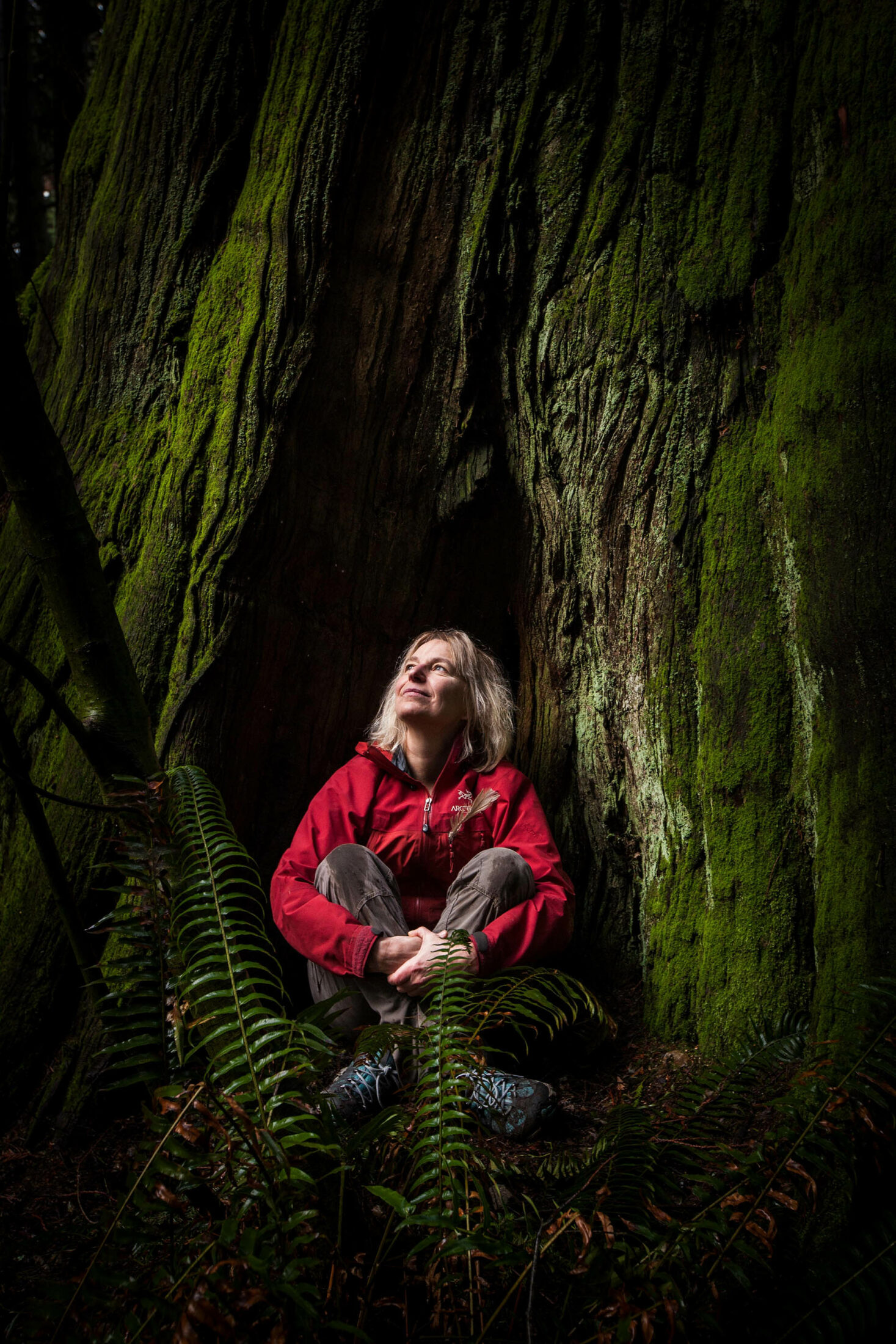
Robert Oelman / Moment Open via Getty Images
MOTH: Pushing the Boundaries of Legal Imagination
by César Rodríguez-Garavito
César Rodríguez-Garavito is a legal scholar and practitioner and the Founding Director of the More Than Human Rights (MOTH) Project. His work focuses on the intersection of law, ecology, science, and the Indigenous and human rights movements. He is the Faculty Director and Chair of the Center for Human Rights and Global Justice at NYU School of Law, a member of the Science Panel for the Amazon, and the editor-in-chief of Open Global Rights.
Who counts as a subject of rights? César Rodríguez-Garavito, founder of the More Than Human Rights Project (MOTH), urges us to remember that we are embedded in a wider biosphere in which every element of the web of life has agency.
The story of more-than-human rights is one of reconnection. At a time when so many of us are feeling the deep loneliness of the human condition in the Anthropocene, speaking about nature in the moral language of rights is an attempt to respectfully reconnect with the living and breathing Earth. The discourse of rights is by no means the only or the most appropriate language for building that bridge. But it is one of the most compelling narratives about connection that we have at our disposal. Human rights remind us that, despite all our differences, we are all fundamentally deserving of respect and consideration. The problem with the traditional human rights story is that, in our effort to connect with each other, we saw it necessary to disconnect from the web of life that sustains us. We anointed ourselves as the sole citizens of the Earth, proclaimed all other beings as aliens with no rights and erected moral and legal walls to keep them out. The more-than-human rights story is about regrounding ourselves in the animal and sensory world of which we have always been part. It is also a story about justice.
When I first heard about the Indigenous origins of the idea of rights of nature, in 2012, I was in the Ecuadorian Amazon, visiting the Sarayaku people, who had been resisting oil drilling in their territory for two decades. Only a few days prior, the Inter-American Court of Human Rights had ruled in favor of the Sarayaku, and I was there as a human rights researcher-advocate to document the origins and impact of Ecuador’s recognition of Mother Nature (Pachamama) as a subject of rights.
While the Inter-American Court concluded that the Ecuadorian government had breached its duty to consult and seek the consent of the Sarayaku people before authorizing oil exploration in their territory, the Sarayaku insisted that all the other beings and spirits of the forest needed to be consulted as well. If the forest is alive—if the animals, the plants, the fungi, the river, the air, and the rocks are all animate beings—then we need to find ways to hear their voices and spirits.
After meeting with José Gualinga, then the political leader of the Sarayaku, I was given the opportunity to interview his father, Don Sabino, the shaman (yachak) of the community. When I sat down with Don Sabino to chat by the Bobonaza river, he did not speak to me of rights, but of life. “The forest is alive, there are spirits in the forest, they are the real rulers of the forest,” he told me in a voice so quiet that it felt like an invitation to listen intently to the sounds all around us.
At the time, I was a card-carrying member of the human rights profession. I would often find myself in places teeming with nonhuman life—canoeing down the Xingú river in the Brazilian Amazon, trekking the Sierra Nevada de Santa Marta in Northern Colombia, traveling to faraway villages in Madhya Pradesh in India, or driving through the mountains around Nairobi—but nature felt only like the backdrop to the real work at hand: documenting human rights abuses in Indigenous territories and war zones, contributing to litigation against government-sanctioned economic inequalities, training young legal practitioners and newly appointed judges in the tools of the trade.
I remember how puzzled and challenged I felt by Don Sabino’s words. However, the seed had been planted in those conversations with the Sarayaku, and soon, the anthropocentrism of human rights felt to me increasingly at odds with the realities of the Anthropocene, from the climate emergency to the sixth mass extinction of species to the crossing of most planetary boundaries. I was far from alone, and relatively late to come to this realization.
The rights of nature paradigm included in the Ecuadorian constitution, which is now incorporated into laws and court rulings around the world, is the Western legal translation of the more fundamental notion that everything is alive, that all beings speak in their own ways—and that law, science, and spirituality are not mutually exclusive but rather participants in a growing conversation about what human rights mean in the Anthropocene.
Since 1990, around five hundred initiatives recognizing rights of nature—including constitutional provisions, national or local laws, policy instruments, court decisions, or nonbinding declarations—have been pursued in forty-four countries and international venues like the United Nations. Ecuador is widely recognized as the headquarters of this global legal laboratory. In 2021, the Ecuadorian Constitutional Court handed down what is perhaps the most sophisticated ruling on the rights of nature in a case involving Los Cedros, a nearly intact cloud forest in northern Ecuador that sits at the juncture of the Andes and the Chocó region, one of the most biodiverse areas in the world. After hearing from scientists, government officials, environmentalists, artists-activists, and community leaders, the Court established that the government’s authorization of mining concessions in the forest violated not only local communities’ rights to water and a clean environment, but also the rights of the forest itself.
Despite these achievements, the idea of rights of nature has yet to make a serious dent on the Western legal canon, including human rights circles. Moving it from the periphery to the core of legal thought and practice entails addressing complex questions. Who counts as a subject of rights? If rights are to be extended to nonhumans, should the new line be drawn at sentient animals, as some animal rights theorists and practitioners would suggest? Or should it be pushed further to include plants and fungi and even rivers and mountains? Should entire ecosystems be treated as subjects of rights or should this status be reserved for individuals or species? How can the interests and voices of animals and other beings be incorporated into political and legal processes? What kind of new legal institutions would be needed for rights of nature to be effectively enforced? More broadly, how can we conceive of human rights without human supremacism, as philosopher Will Kymlicka has provocatively asked?
One potentially transformative way to address these questions would be to establish a deeper dialogue between law and the sciences that have trained their sights on deep time and the unity of the web of life. To use novelist Richard Powers’s apt term, these “humbling sciences”—ecology, botany, ethology, mycology, microbiology, geology, chemistry, and other natural sciences—are effectively blurring the categorical distinction between humans and nonhumans, as well as challenging the anthropocentrism that has dominated fields like human rights. In so doing, they are joining the much older claims of Indigenous cultures that are based on the inseparability of humans and nature and are couched—as Robin Wall Kimmerer has written—in a “grammar of animacy” that recognizes human and nonhuman life and agency alike.
A few years ago, I founded an initiative that I called More-Than-Human Rights (MOTH). Co-organized with colleagues at New York University’s School of Law, the project brings together lawyers, scientists, Indigenous leaders, artists, writers, advocates, judges, journalists, philosophers, and other thinkers and doers from around the world who work together to advance ideas and practices that support the rights and well-being of nonhumans.
In proposing the term more-than-human (MOTH) rights, I do not mean to pick an unnecessary terminological fight with those who prefer the more well-established language of rights of nature, which I also use. As someone who spends most of his time in legal academia and practice, I am painfully aware of the trappings of lawyerly rabbit holes. Linguistic preferences aside, my point in speaking of MOTH rights is a substantive one. MOTH rights are meant to serve as a clarifying and provocative supplement—a way to call our attention to the separation between humanity and nature that is implicit in our use of rights-of-nature language. Indeed, the term “more-than-human” was introduced by David Abram to refer to the whole of the biosphere in a way that avoids the conventional separation between humans and their “environment,” between humanity and nature. The human world is not separate but rather embedded in the more-than-human world. By extending this notion to the realm of law, I suggest that the rights of nature are neither separate from nor derivative of human rights. To the contrary: if humans are nested in the more-than-human world, then the rights of human beings are intrinsically entangled with the rights of nonhumans and embedded within the rights of nature.
The growing interest in more-than-human rights is not an isolated trend. On the contrary, it is part of a broader concern for a new relationship with nature that is evident in many fields, from the sciences to the humanities, from arts and culture to spirituality. Increasingly, contributions in all of these fields are taking an ecological turn toward a recognition of the relationships, dependencies, and similarities among the parts of a whole. This ecological view is centered on symbiosis, on the close ties of collaboration and competition that constitute the parts of a whole—be they organisms in an ecosystem or members of different human groups.
The ecological turn in the sciences and other fields goes further: it does not limit itself to highlighting the connections among individuals but postulates the deep entanglement between them, to the point of blurring the boundaries between individuals and between individuals and their surroundings. These are the “entangled lives” that mycologist Merlin Sheldrake has written about to capture the interpenetration between plants and fungi, or between the algae and fungi that make up lichens, or between human cells and the countless microbes that inhabit us. “We are ecosystems, composed of—and decomposed by—an ecology of microbes,” he concludes. “Symbiosis is a ubiquitous feature of life.”
If biology has become ecology, if individuals are ecosystems, where does that leave human rights, which arose to protect individual Homo sapiens? What novelties and what surprises would this turn toward ecological thinking bring to human rights?
Another conceptual foundation of human rights that is being shaken up is the hierarchical order that places humans above nonhumans. Traditionally, the human rights project has implicitly or explicitly held tight to this great chain of being and the human supremacism that it entails. But in recent decades, animal rights theorists and advocates have mounted a powerful challenge against human supremacism, thus crucially pushing down the scope of moral consideration and rights protection a couple of notches.
As Merlin asks in Entangled Life, “Biological realities are never black and white. Why should the stories and metaphors we use to make sense of the world—our investigative tools—be so?” In the same vein, why should the concepts that we use to draw the line between rights-holders and the rest of nature follow the problematic binaries that separate humans and animals, higher animals and other animals, and animals and the rest of nature? This is the challenge that more-than-human rights raise.
To my surprise, some of the most enthusiastic and thoughtful participants in the rights of nature movement and the MOTH Project are not lawyers or judges, but rather natural scientists and artists. Recently, I visited Los Cedros with fellow MOTH collaborators, Robert Macfarlane, Cosmo Sheldrake, and Giuliana Furci, where we worked on co-creating a song with the beings of the forest. It was a multispecies jamming session. Rob composed lyrics that riffed on the name of Humbaba, the spirit of the forest in the Epic of Gilgamesh, the oldest written narrative poem, to which Cosmo put voice and instruments, Giuliana added verses in Spanish, and I very occasionally chipped in. Cosmo later mixed in additional sounds he recorded at Los Cedros and professionally produced the tune. Thus was born The Song of the Forest. As part of the MOTH Project’s initiatives, we are exploring legal avenues to copyright the song (or, as we like to say, copygreen) as a co-creation of the humans and the nonhumans who were present that night. If Los Cedros is already recognized as a subject of rights, why can’t it be recognized as a copyright co-holder?
There are, of course, many legal and practical obstacles to the copygreen idea. In addition to contributing to the preservation of Los Cedros and the visibility of the ruling that protects it, our goal is to push the boundaries of legal imagination and ask questions that perhaps others will be able to answer more adequately. The rights we will seek for the forest and for ourselves are moral rights—that is, recognition of co-authorship—as opposed to economic rights over royalties.
Above and beyond copygreen or any other initiative, the MOTH Project’s goal is to serve as a convener, connector, and incubator for ecocentric experiments. For instance, we are partnering with Project CETI on the legal opportunities and risks of A.I.-assisted translation of whale communication, establishing a collaboration between mycologists and the Sarayaku people to jointly study the fungal communities in their territory, and supporting the implementation of the Los Cedros ruling and other landmark court decisions on the rights of nature. As we expand the project, I am reminded of a line in a poem by Rumi: judge the moth by the beauty of its flame. Rather than a top-down structure or a conventional network, the project’s logic (and, I would like to think, its beauty) is mycelial in nature: we probe and experiment in different directions and choose to reinforce and go deeper into initiatives and collaborations that seem most fruitful or where our collective could make the most contribution.
More-than-human rights are as much a legal proposition as they are a story about our relationship with the more-than-human world. The walls are crumbling under the pressure of old and new narratives that storytellers of all kinds are concocting about the embeddedness of humans in the more-than-human world, which feel even more urgent as new technologies, like A.I., force us to reexamine what is distinct about us. The categorical exclusion of nonhumans is one of the defining inequities of liberal modernity’s social contract. Working for the recognition of MOTH rights, therefore, entails challenging this fundamental form of discrimination. Indeed, when I work with animal rights advocates campaigning against industrial farming or mycologists forcefully denouncing the exclusion of fungi from conservation frameworks that protect animals and plants, I recognize the moral indignation that fuels human rights activists’ struggles against laws and practices that discriminate against vulnerable human populations. MOTH rights’ narrative about nonhuman species claims that “they are not brethren, they are not underlings; they are other nations, caught with ourselves in the net of life and time, fellow prisoners of the splendor and travail of the earth,” as American naturalist Henry Beston wrote of animals. Just as international law deals with justice among nations, MOTH rights require legal frameworks and stories that embody multispecies justice.







